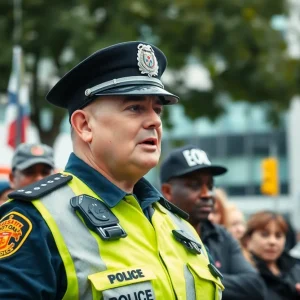Celebrating 70 Years: Remembering Asheville’s Downtown Festival, Bele Chere
Asheville’s Iconic Festival Highlights “Beautiful Living”
From 1979-2013, the bustling streets of downtown Asheville welcomed the annual summer festival known as “Bele Chere.” This term, deriving from an ancient Scottish dialect, translates to “beautiful living.” The festival was indeed a beautiful representation of all things Asheville, growing during its run to become one of the largest downtown festivals in the Southeast.
For over 30 years, residents and tourists alike delighted in a blend of food, music, and local wares offered by street vendors. It became a cherished tradition, showcasing the city’s vibrancy and spirit through lively celebration.
News 13 and Bele Chere: A Tradition of Broadcast
Broadcasting station, News 13, was an integral part of the festival phenomena, with live broadcasts and reports being a regular feature each year. Tammy Watford, the long-serving anchor, recalled the festival’s long-standing affair with summer rains—a yearly challenge that never dampened the festival excitement.
Looking Back: Memories of Bele Chere
In honor of News 13’s 70-year anniversary celebrations, the team delved into the archives, drawing out fond memories and retracing the festival’s vibrant history. Retired anchor from News 13, Sherrill Barber, reminisced about a feature on the festival which included interviews with Robin Daniel, the inaugural organizer of Bele Chere, and Steve Metcalf, Asheville’s city planner from 1980-82.
According to Barber’s recollections, Robin Daniel helmed the first 10 festivals, each aimed at luring people to take part in the downtown street fiesta. Daniel fondly referenced a 1980 poster that depicted the beloved street dancing, signifying the festival’s vibrant spirit.
Festival Contributions: A Turning Point for Asheville
While browsing through old images of the festival, Daniel revealed that almost all elements of Bele Chere were contributed by community members in 1979, including the event’s poster by Price-McNabb. Notably, the festival paid only the musicians, indicating the community-driven nature of the event.
As Daniel’s images depicted, street musicians played against a backdrop of vacant stores. The struggle of those times resonates with the narrative of Bele Chere, which proved to be a pillar in keeping the city’s center alive.
Bele Chere: A Catalyst for Change
As businesses moved to shopping center developments, the city center, as captured by Metcalf, became akin to a “ghost town,” with many stores and establishments being boarded up. However, Bele Chere played a crucial role in bringing people back to downtown, triggering a radical shift in the city’s atmosphere.
As per Metcalf’s insights, Bele Chere was successful in encouraging people to appreciate the city’s unique architecture, the energy of the streets, and the allure of urban living — aspects which rejuvenated the downtown area over time.
Today, the festival may no longer be a part of Asheville’s annual events, but its legacy remains embedded in the city’s heart. The memories continue to bring smiles, serving as a reminder of the “beautiful living” that once was, and continues to be, the essence of Asheville.






